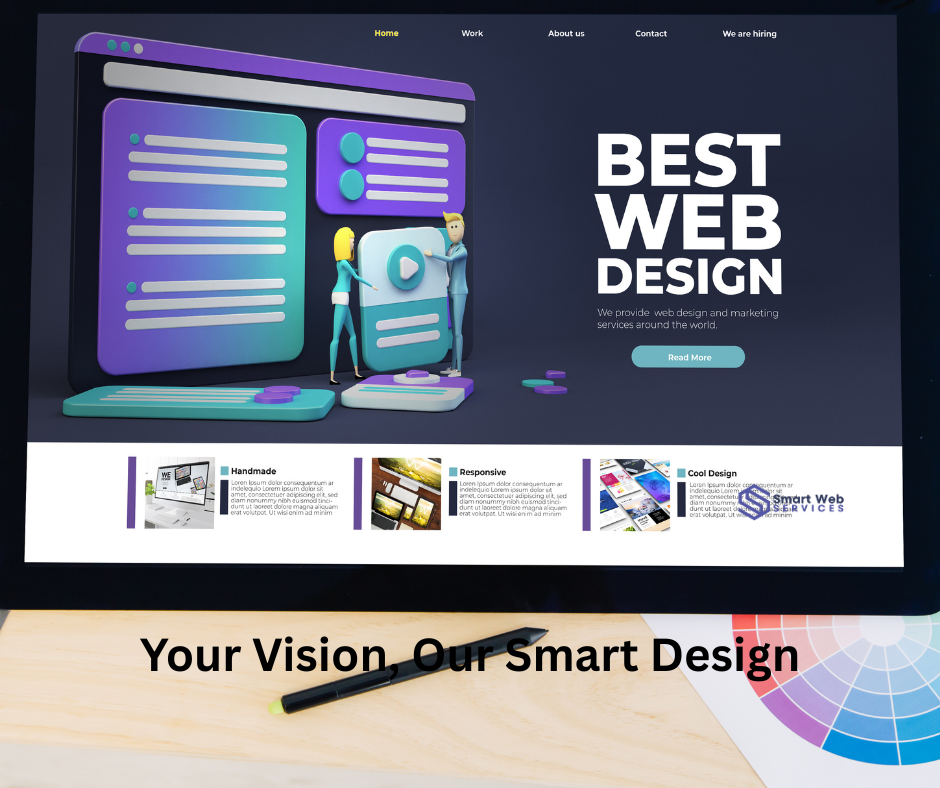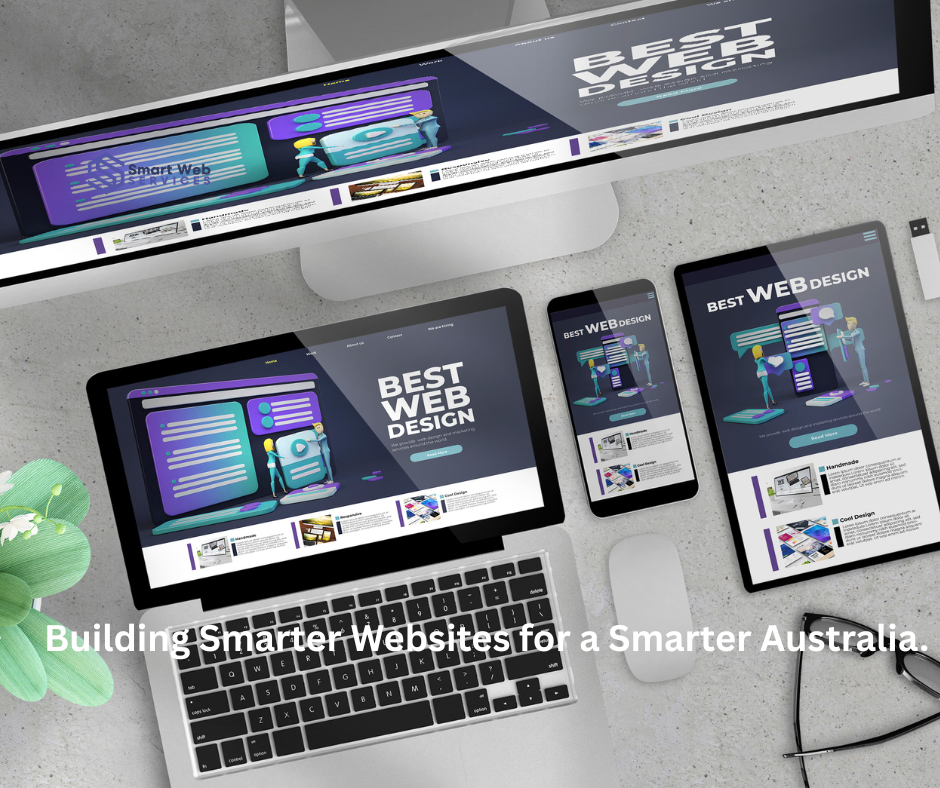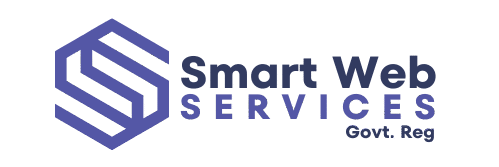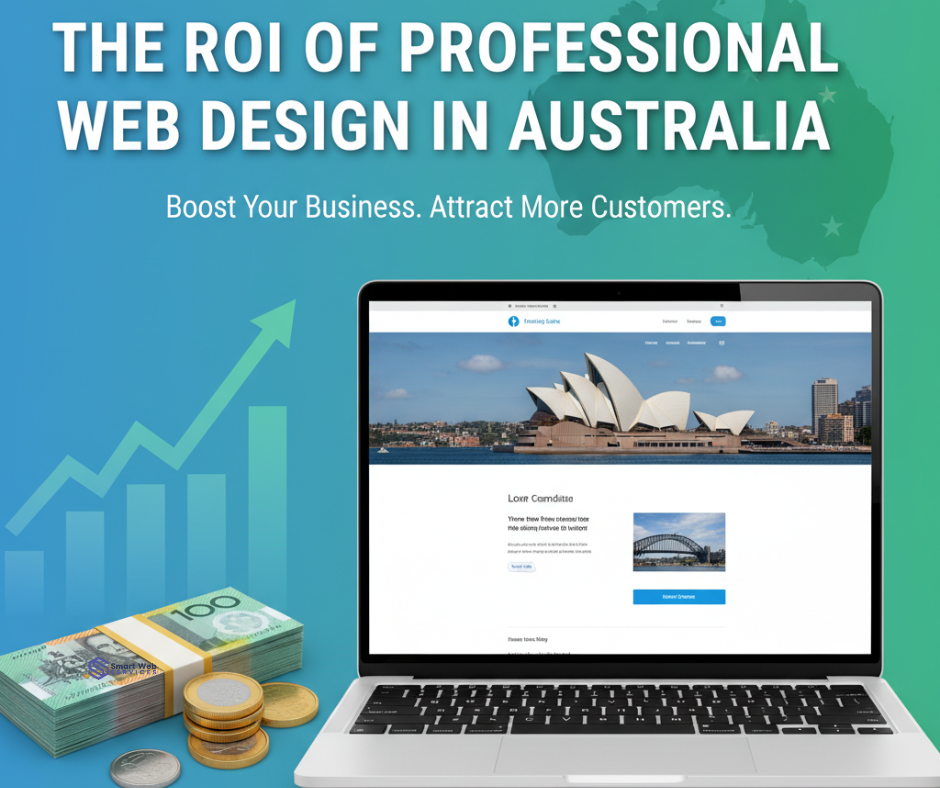In today’s digital age, for businesses across Australia — from Perth to Brisbane — a website isn’t just a placeholder, it’s a front door. Professional web design isn’t a luxury; it’s a game-changer. When done correctly, good design generates clear Return on Investment (ROI) through improved user experience, higher search engine rankings, tighter conversions, and long-term cost savings.
This article explores exactly why professional web design matters, how to measure its ROI, and how Australian businesses can get the most in returns from their web-design investment.
Why Professional Web Design Is More Than Aesthetics
Many small and medium-sized enterprises believe that web design is largely about looks. But professional web design encompasses much more:
- User Experience (UX): Navigable structure, intuitive menus, clear call-to-actions, pleasing visuals — all that reduces bounce rate and encourages visitors to stay and engage.
- Mobile Responsiveness: In Australia, mobile devices make up a large share of web traffic. A site that adapts perfectly to phones and tablets ensures consistent performance and prevents losing potential customers.
- Speed & Performance: Fast-loading pages aren’t just nicer to use; they affect how Google ranks your site. Slow load times frustrate users and cause abandonment.
- SEO-Friendly Foundations: Clean code, proper tag structure (headers, alt text), schema markup, accessible content — that sets up your business for better visibility in search engine results pages (SERPs).
Professional web design means designing not just for beauty, but for purpose: converting visitors into customers.

Key Areas Where Professional Design Delivers ROI
Let’s look at some of the major levers through which professional web design drives returns for Australian companies.
| Area | How ROI Shows Up |
|---|---|
| Conversion Improvements | Conversion rate goes up when design reduces friction — think clearer buttons, better content hierarchy, trust badges (SSL, reviews). Even a 1-2% lift in conversion on steady traffic can boost revenue significantly. |
| Lowered Marketing Costs | With better conversion rates, paid advertising (Google Ads, Facebook) becomes more efficient. You spend less per lead / per sale. |
| Organic Search Growth | Search engines reward sites that are mobile friendly, fast, and well-structured. More organic traffic means stable long-term leads and sales without continued ad spend. |
| Brand Credibility & Trust | A polished, personable design inspires confidence. Customers trust sites that look professional. That trust translates into higher average order values and repeat purchases. |
| Less Maintenance & Fewer Reworks | A well-built site, using modern web architecture and best practices, reduces maintenance cost over time. Avoids technical debt, decreases errors, and reduces the effort needed to add features or update content. |
How To Measure ROI: KPIs To Track
To see returns clearly, it’s necessary to set measurable goals and compare metrics before and after your design refresh.
- Conversion Rate: (leads, sales, quote requests) ÷ Visitors.
- Traffic Volume & Source Breakdown: How much comes from organic search vs paid vs referrals?
- Bounce Rate: Lower is better. High bounce → users not finding what they expected.
- Page Load Time / PageSpeed Scores: On desktop and mobile.
- Average Order Value (AOV) or Average Lead Value.
- Cost Per Acquisition (CPA) from paid channels.
- Customer Lifetime Value (CLV or LTV) if you have repeat purchases; this shows the long-term return of a client acquired via the new site.
- Keyword Rankings & Visibility: How many keywords are in top 10 or top 3? Is your site appearing in featured snippets?
By tracking these metrics over 3, 6, and 12 months, you can identify how much the investment in professional design is paying back.
What Results To Expect & Pay-off Periods in Australia
While every business and industry is different, here are some typical benchmarks and expectations for ROI in the Australian context:
- Small businesses / local service providers: Break-even points can be 3-9 months if they have existing traffic and make design improvements in conversion paths. E.g., clearer contact forms, local SEO, and mobile optimization.
- eCommerce stores: With higher average order values and repeat buyers, the ROI can be significant within 6-12 months after improving checkout UX, site speed, and product page layout.
- Startups/new websites: The largest gains often come in organic traffic and SEO. Expect meaningful shifts in search rankings after 4-9 months, and full stability after about a year.

Design Elements That Have Big Impact in Australia
Some features tend to give greater return for Australian companies, because they match local customer behaviour, expectations, and market conditions.
- Local / Mobile First Design
Customers in Australia often search from mobile devices, especially in metro-areas or while on the move. Designing for mobile first ensures usability and good Google ranking. - Strong Local SEO & Google My Business Integration
For service businesses, appearing in the local pack and having proper address, hours, and reviews helps referrals and foot-traffic. - Fast Hosting & Performance Optimization
Australia’s geography means many sites hosted overseas experience latency. Choosing fast local hosts or using CDNs helps speed, which helps both SEO and user satisfaction. - Conversion-Focused Landing Pages
Whether for PPC campaigns, seasonal sales, or promotions, landing pages designed around a single goal convert better. - Trust Signals & Design Clarity
Displaying reviews, SSL certificates, return policies, transparent pricing helps build trust. Australians tend to research before buying; trust matters. - Scalable, Modular Architecture
Using frameworks or well-structured CMS (like WordPress, Joomla, or headless frameworks) to allow small changes (new features, content updates) without major redesigns or cost spikes.
Understanding Cost vs. Value
A common concern: “Professional web design costs a lot.” It does cost more up front than using a template or off-the-shelf website builder without thought. But consider this:
- If your site upgrade increases conversion by just 1-2%, that can turn into thousands of dollars per year depending on your traffic.
- If you reduce bounce rate, you often also improve user engagement (more pages per session), meaning more cross-sales or upsells.
- Better design means fewer support tickets, fewer “why doesn’t this work” complaints, less time spent maintaining broken parts.
So the “cost” of professional design should be seen as a revenue-and-savings multiplier rather than just an expense.
Avoiding Mistakes That Hurt ROI
Even when going professional, businesses often make mistakes that reduce ROI. Be mindful of:
- Over-designing without testing — fancy animations or heavy graphics may slow down load times or distract from conversion paths.
- Ignoring content strategy — design is only one part; content (text, images, video) must be tailored, relevant, and aligned with customer intent and SEO.
- Skipping analytics & A/B testing — without data, you won’t know what works. Use heatmaps, conversion funnels, test calls to action, color changes, layout tweaks, etc.
- Neglecting mobile UX and accessibility — a site that’s hard to use on phones or for people with disabilities loses users and may even violate regulations.
Case Snapshot (Hypothetical)
Imagine a Melbourne-based home renovation company. Before redesign, their site was slow, mobile-unfriendly, and had a confusing navigation. After investing in a professional redesign with mobile-first layout, performance fixes, simplified booking form, and local SEO:
• Speed improved by 60% → bounce rate dropped by 25%.
• Conversion (inquiries via form) doubled.
• Paid ad spend lowered by 30% to get same lead volume (because better landing page).
• In 8 months, the redesign paid for itself.
Final Thoughts
For Australian businesses that want steady, scalable growth, professional web design is not just a cost — it’s an investment with measurable returns. When you get design, UX, SEO, performance, and brand consistency right, your website becomes more than a digital card or brochure — it becomes a lead engine, trust builder, and revenue stream.
If you’re considering giving your website an upgrade, make decisions strategically: set benchmarks, choose a designer or agency that understands Australian customers and competition, track your metrics, and expect that returns will grow over time.



